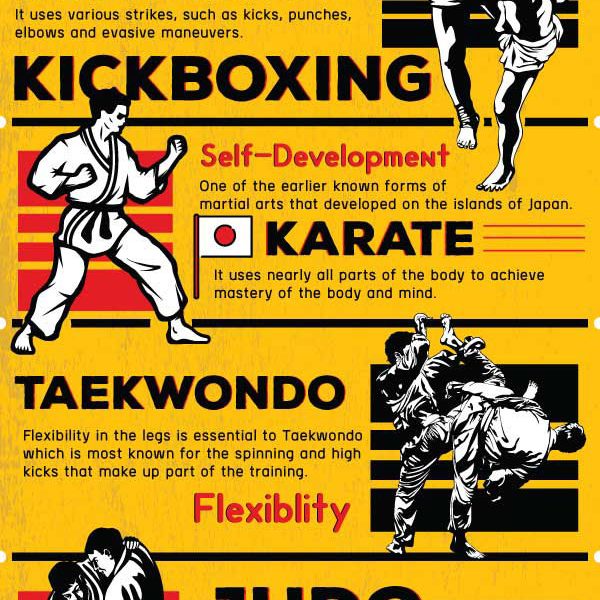What Are The Distinctions In Between The Emphasis On Self-Control In Traditional Martial Arts And The Affordable Focus Of Modern-Day Fight Sports? Explore The Vital Differences That Can Influence Your Course
What Are The Distinctions In Between The Emphasis On Self-Control In Traditional Martial Arts And The Affordable Focus Of Modern-Day Fight Sports? Explore The Vital Differences That Can Influence Your Course
Blog Article
Material By-Keith Sexton
When you think of martial arts, do you lean a lot more toward the standard methods or the modern-day fight sporting activities? Each course supplies one-of-a-kind benefits and experiences, shaped by their viewpoints and training methods. Typical martial arts emphasize individual growth and discipline, while modern battle sports concentrate on competitors and efficiency. Recognizing these differences can guide you in picking the appropriate method for your journey. But exactly how do these distinctions materialize in training and ideology?
The Approach and History Behind Typical Martial arts
While many individuals connect martial arts with physical fight, the approach and history behind typical martial arts run much deeper. You'll discover that these self-controls stress individual growth, discipline, and respect.
Originating from https://martialartsinfoforkids98776.blogsmine.com/35495841/exploring-the-spiritual-facet-of-martial-arts-finding-inner-peace , typical martial arts were commonly established for Self-Defense and spiritual growth. They symbolize concepts such as balance, consistency, and self-constraint, directing experts past plain fighting skills.
As you train, you'll not only learn techniques but additionally acquire insights right into the society and values that formed these arts. The routines and customs, usually passed down through generations, cultivate a sense of area and belonging.
The Competitive Nature of Modern Fight Sports
Modern fight sports have transformed the landscape of martial arts into a very competitive field, where professional athletes challenge in a test of skill, method, and endurance.
You'll discover that competitions are usually arranged with strict regulations and policies, guaranteeing fair game and security. These events attract big target markets, sustaining the enjoyment and strength of matchups.
Professional athletes educate carefully, not just for physical prowess yet also for mental toughness, recognizing that every information counts in the ring. The adrenaline thrill throughout competitions is palpable, as fighters push their limits to claim victory.
Fans value the athleticism and creativity entailed, making modern-day fight sports a thrilling spectacle that continues to progress and astound fanatics around the world.
Training Methods and Methods: A Relative Analysis
The competitive atmosphere of modern-day combat sports demands ingenious training approaches that differ dramatically from typical martial arts.
In modern-day training, you'll focus on details techniques, competing, and conditioning, commonly utilizing drills that mimic actual fight scenarios. You'll see an emphasis on measurable efficiency and constant competition to assess your abilities.
On the other hand, conventional martial arts prioritize types, katas, and philosophical mentors, commonly emphasizing self-control and respect over competition.
Training is typically less intense and might involve repetitive technique rather than real-time sparring.
While both approaches build ability and fitness, modern-day fight sporting activities offer an extra dynamic and versatile training atmosphere, preparing you for immediate difficulties in the ring or cage.
Choose Keep Reading that aligns with your goals and passions.
Final thought
In picking between traditional martial arts and modern-day battle sporting activities, it actually comes down to what you value many. If you're looking for personal development, self-control, and a sense of neighborhood, conventional arts might be your ideal fit. But if you prosper on competitors and real-time obstacles, contemporary combat sporting activities could be the method to go. Ultimately, both paths provide special advantages, so it's all about straightening your training with your personal objectives and rate of interests.
